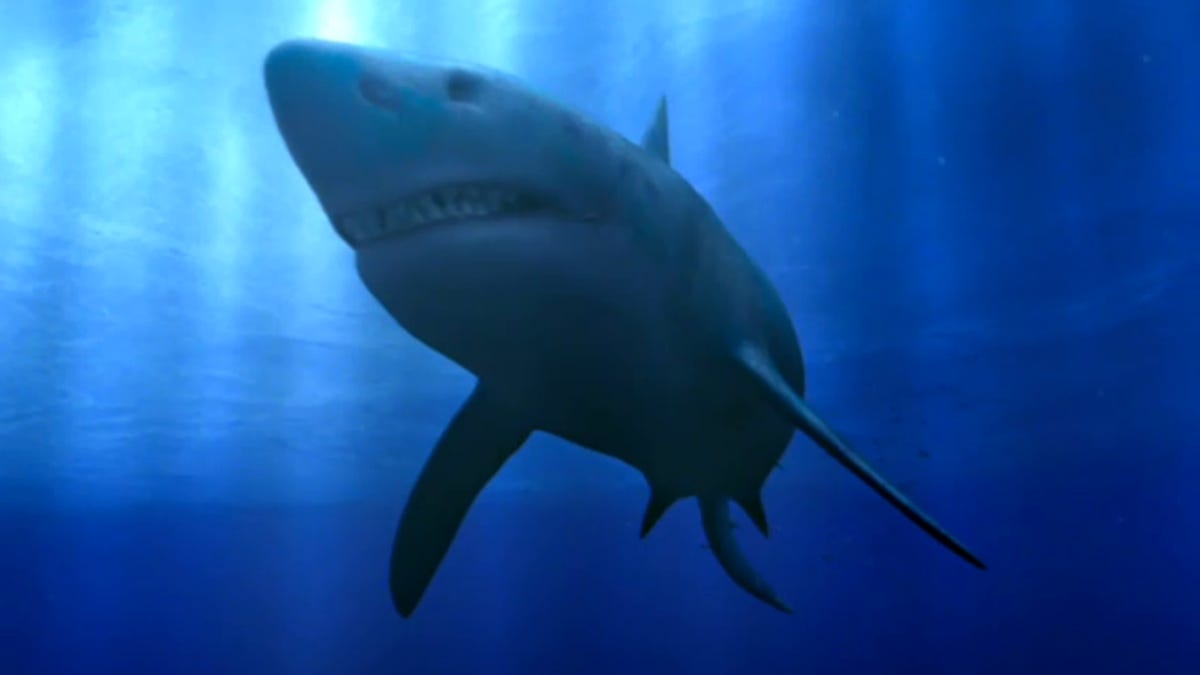Remnants of shark from 330 million years ago found in a Kentucky cave
"It's like finding a missing puzzle piece to a very big picture."

A shark from Discovery's Megalodon: The Monster Shark Lives TV show. Scientists have discovered ancient shark remains inside a Kentucky cave.
The southeastern state of Kentucky isn't known for its shark population. But 330 million years ago, that might not have been the case.
Ecologist Rick Olson and paleontologist Rick Toomey stumbled upon some unusual fossils preserved in cave walls when they were exploring Mammoth Cave National Park in Kentucky in November 2019. On closer inspection, they suspected they'd found a large, fossilized shark head. The scientists took photos of the fossils of a shark's lower jaw, skull cartilage and teeth.
The shark fossil photos eventually got the attention of Maryland-based paleontologist John-Paul Hodnett, who determined that the fossils belonged to a shark species called Saivodus striatus from the Late Mississippian period, dating back to around 330 million to 340 million years ago.
"Most significantly, the majority of the shark fossils we discovered come from a layer of rock that extends from Missouri to Virginia, but never documented the presence of sharks, until now," Hodnett told the Louisville Courier Journal on Wednesday. "It's like finding a missing puzzle piece to a very big picture."
Hodnet and the other scientists involved in the project will present their findings in October to the Society of Vertebrate Paleontology's annual meeting in Cincinnati.
The important thing to note is that finding shark skeletons is very unusual because cartilage rarely survives fossilization. But since sharks replace their teeth often during their lifespans -- and the fact that tooth enamel helps the teeth stay preserved -- finding shark teeth is very common.
Since the initial shark fossils were first discovered, according to the Louisville Courier Journal, Hodnett and other scientists have gone back to the cave to discover 100 individual specimens including teeth and dorsal fins of other shark species.

